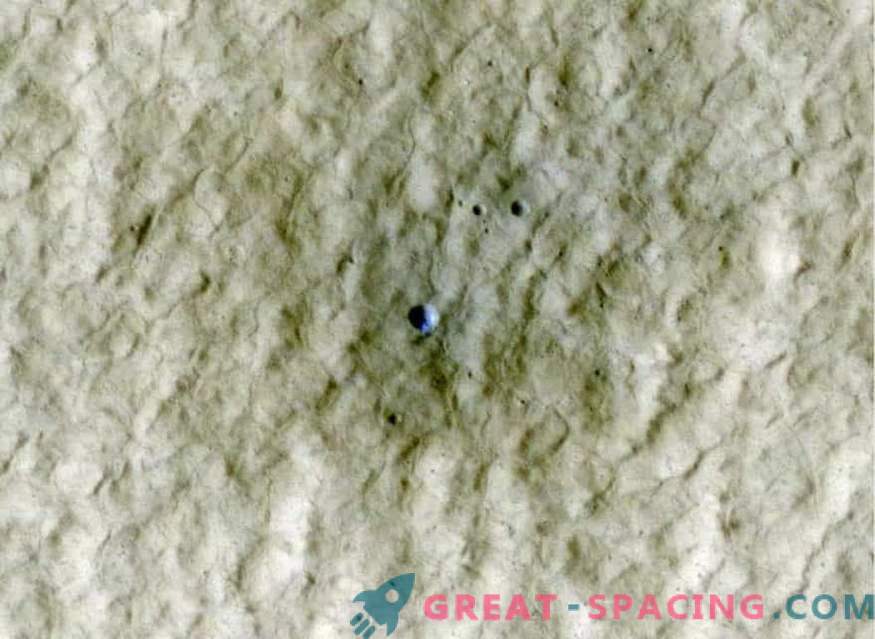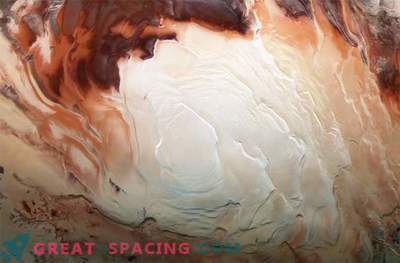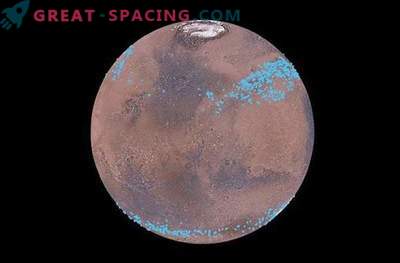
The Martian South Pole was lit by summer sunlight in April 2000. On a dense ice cap, you can see a thin layer of carbon dioxide ice. The NASA THEMIS project found water ice in an area highlighted in blue-green.
Recently, researchers have discovered one of the largest Martian reservoirs. It is represented by a dense ice layer hidden under the North Pole of the Red Planet. Researchers believe that studying it will make it possible to understand whether life could exist on this planet.
Discovery made using the radar SHARAD orbiter NASA MRO. Radar radar waves penetrate 1.6 km below the surface. Thus, under the North Pole, it was possible to find ancient ice layers, which can reveal the history of “young” Mars. The composition is especially important, as it reveals how favorable the climatic conditions for life were.

Overview of the Colles Nili area, marking the height and depth parameters of the relief
Also surprised by the number of found ice stocks. If all this volume melted, the planet could have become covered by the global ocean with a depth of 1.5 m. Scientists believe that these layers formed when ice accumulated at the poles during the last ice ages. With each heating of the planet, the remnants of the ice caps were covered with a layer of sand, which played the role of protection from solar radiation and dispersion into the atmosphere. All the glacial events of the Red Planet are due to changes in the orbit and inclination of the planet. With an interval of 50,000 years, Mars leans towards the Sun, after which it gradually returns to its previous position. In the vertical position, the equatorial line is turned towards the star, due to which ice appears at the poles. At the moment of inclination, the caps recede.

The North Martian site with a fresh crater, whose diameter is 6 m. A bright material is visible inside (blue)
Researchers have long believed that ice caps in the period of tilt completely and permanently disappear. However, most of the ice layer remained under the layers of sand. In fact, the mechanism of the cake works here: the ice cakes are sandwiched and superimposed on each other.
Scientists need to collect as much data as possible about these ice deposits in order to clarify the Martian climate models and understand how life-prone the planet was in the past. Yes, and for the colonists is not bad news, because they can get another source of water supplies.











































